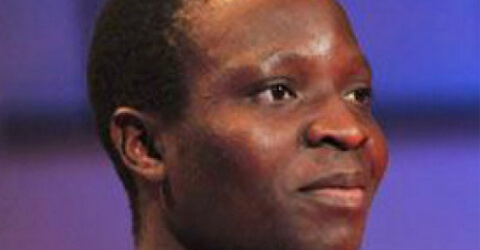William Kamkwamba is a Malawian inventor and author. He gained popularity when he built a wind turbine to power multiple electrical appliances in his family’s house in Wimbe, using blue gum trees, bicycle parts, and materials collected in a local scrapyard. An inventor who has since then helped his country flourish.
William Kamkwamba was born in a remote village in Malawi in 1987. He was raised in Masitala village along the central plains. He is one of seven children born to sustenance farmers who grew maize and tobacco and often struggled to make ends meet. The village was severely affected by droughts, and his childhood was constantly interrupted by long periods of hunger due to famines in the region.
When Kamkwamba was 12, he was captivated by electricity, a luxury that he could not afford. He started teaching himself radio repair work and began tinkering with bicycle dynamos, hoping to understand the inner workings of generators. During a devastating famine in 2001–02, Kamkwamba dropped out of high school during his first semester as his parents could not afford to pay his fees. The famine killed thousands of people in the region, but little Kamkwamba was determined to reach his quest to generate electricity. Rather than accepting his fate, Kamkwamba started borrowing books from a small community lending library located at his former primary school funded by the American government. He borrowed an 8th-grade American textbook called Using Energy that depicted wind turbines on its cover, and he was instantly mesmerized by the image. He soon had a plan and decided to build a windmill to power his family’s home and impede the use of kerosene, which provided only smoky, flickering, distant and expensive light after dark that also made his sisters fall sick.
He recalled, “I didn’t get any confidence from my family, but some of my friends were very supportive of what I was doing, and from me, myself. I had confidence in myself after seeing the picture of the windmill in this book; I said to myself, ‘Somewhere, somebody built this machine, and it was built by hand, and it was a human being who did that. I’m also a human being.”
He started by building a prototype using a simple radio motor. He built his initial 5-meter windmill out of trees, a tractor fan blade, a broken bicycle and an old shock absorber. He connected the windmill to a car battery to power four light bulbs and also charged his neighbours’ mobile phones. His system was even equipped with light switches and a circuit breaker to cut off the flow of excess current created with magnets, wire, and nails. He later created a 12 meters windmill to better catch the wind above the trees. A third windmill pumped water for irrigation to provide water to the fields.
Kamkwamba’s subsequent projects have included malaria prevention, clean water, lighting and solar power for six homes in his family compound; a drip irrigation system, deep water well with a solar-powered pump for clean water and also creating outfits for the village team Wimbe United with their first-ever uniforms and shoes. Since receiving their sun and wind-themed uniforms, the team has been on a winning streak that has brought the village together with pride.
The windmill project drew many visitors from kilometres around, including Dr Hartford Mchazime, PhD, the Deputy Director of the MTTA, the Malawian NGO responsible for the community library. The news of William’s inventions reached Emeka Okafor, Program Director for TEDGlobal, a prestigious gathering of thinkers and innovators. Okafor searched quite diligently to find William and invited him to the conference as a fellow. William’s presentation led to additional mentors, donors, and companies supporting his education and subsequent projects in the village.
After his TED talk in 2007, he has spoken at the Aspen Ideas Festival and Maker Faire Africa, World Economic Forum, chatted with Al Gore, Bono, and Larry Page launched a documentary and released an inspirational book, The Boy Who Harnessed the Wind by William Morrow, co-authored with journalist Bryan Mealer.
He realized the role education plays in bringing about inventors that can transform villages and countries and started his school, The African Leadership Academy. He thinks the Internet is a potent tool, especially in a place like Malawai; he said in an interview, “As I said, I could have used this Google for my windmill. But it also brings people together. At my school [the African Leadership Academy], I have students from all over Africa and we all learn about each other’s cultures. This is very important, especially in Africa where many wars are fought over land and tribal differences. You can also learn to read on the Internet, have access to a valuable education that you cannot get in the poor village schools. It really is a window to the wonderful world.”
When asked if he approached the idea to generate electricity using windmills as a path to tackle the ongoing crisis of Climate Change, he said, “We don’t talk about wind like it’s helping climate change. We talk about wind and solar because it’s a simpler and cheaper way to give us electricity and irrigation. Clean water and power is our right as humans on this earth, and for too long our governments in Africa have failed to provide these things. They also failed to bring us telephone lines, so we simply put up cell towers and now millions of Africans have mobile phones. We skip the problem by creating our own solutions. And yes, if this can save the planet in the process, then I am happy for that.”







